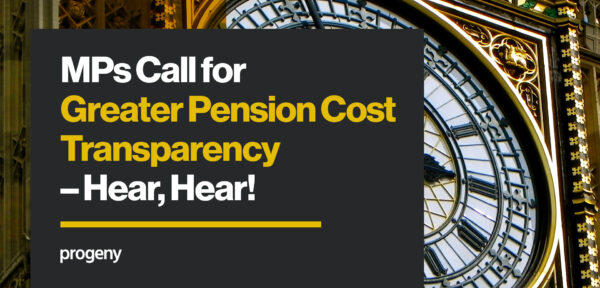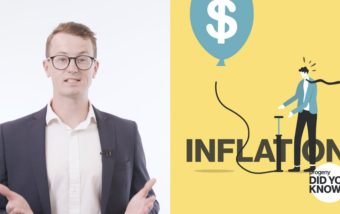The report by the Commons Work and Pensions Select Committee strongly recommends that parts of the pension industry should come under closer scrutiny to protect the public against misinformation and overcharging.
The Committee pulled no punches as they highlighted how the industry was failing its customers, and outlined the steps needed to rectify the situation and restore trust.
Key Findings and Recommendations
- The report calculated that up to £2 billion was being swindled from savers by ruthless financial advisers who were exploiting lack of knowledge and education on pensions to hit customers with unnecessary fees and extra charges.
- Despite this, the committee found that out of a total workforce of 3,700 staff, the Financial Conduct Authority only commits 10 people to combatting pension scams.
- MPs said they were ‘unconvinced’ that the pensions industry would transparently provide information and give clear guidance on costs of their own accord, and so has urged the Government to compel them to do so.
- The Committee has recommended a value for money measure for pension schemes which can be applied across the industry and can be seen by scheme members themselves.
- It has also called for the FCA to consider creating a register of asset managers’ records of responding to reasonable requests for information. The report found many asset managers to be reluctant to provide comprehensive information about the costs accompanying each investment.
- MPs feared that many pension trustees were making decisions about investments without an accurate understanding and insight into the level of costs they were incurring.
As the Committee pointed out, a seemingly small difference in fee percentage can have a huge impact over your pension’s lifespan.
For example, a £50,000 pension pot generating a return of 5% per year over 20 years would increase by £83,000 to £133,000. The introduction of a 1% fee would reduce this increase to £60,000. A 2% fee would take it down again to an increase of only £40,000, so the saver would be losing more than half of the potential growth to fees.
Transparency – Tried and Trusted
This story is important because the pensions industry, like financial advice and financial services more widely, depends largely on trust. If investors and savers don’t feel they can trust their advisers, asset managers or investment managers with their savings, both the industry and savers will suffer. It’s a simple equation, but one that some practitioners seem to forget. The problem is that when some parts of the industry forget, we all tend to be tarred with that same brush.
On the flip side, the positive way to view this is that if we all strive to do the right thing, then we all see the benefits – which means happy and confident clients and successful financial services providers and advisers. This is the perspective that’s always informed our approach to transparency at Progeny.
I spoke to Progeny Managing Director Neil Moles, who defines our stance: “We have been advocates of greater transparency across the industry for years, seeking to lead by example.
“Not only does greater transparency translate into greater trust, it also allows investors and savers to compare between products and providers more effectively. It’s easier for clients to weigh up the service they’re receiving versus what they’re paying, giving them more choice and control over their financial decisions.
“We provide an exceptional service to our clients with no hidden fees or charges. Our aim is that both quality and cost are clear to see.”
A focus on costs – more than the cheapest option
When we are putting a portfolio together, we are focused on understanding the costs associated with securities and whether these costs are warranted. Our investment process entails a robust set of security selection criteria, but there is more to understanding costs than just taking the cheapest option.
A prime example of this is selecting funds that offer exposure to the US in our Dynamic Growth Portfolios. Only 13% of active managers outperform the notoriously efficient US stock market and the majority of active managers charge a premium for trying to be one of the few outperformers so we selected a low-cost index fund. However, where there is a greater probability of outperformance, selecting a fund that generates alpha may justify a higher cost. Sometimes it can be worth paying more for a larger expected return.
Director of Progeny Asset Management, Ian Hooper, explains our commitment to transparency in asset management: “A clear view of costs gives us a better reading of how a product is performing and whether it wins its place in a client’s portfolio. This makes sure we provide proven and visible added value for them, and that if the cost is higher it is demonstrably justified.
“We’re proud to practise what we preach by publishing all Progeny Asset Management fees on our website. We also offer a Portfolio Review Service. This is an independent evaluation of the investment strategy and performance of your current investment manager after costs, and compared with the industry generally. It gives a meaningful comparison of the service you’re receiving versus the costs you are paying.”
If you’re seeking a clearer perspective and greater clarity across your financial planning, please get in touch, we’d love to help.
This article does not constitute advice. Individuals must not rely on this information to make a financial or investment decision. Before making any decision, we recommend you consult your financial adviser to take into account your particular investment objectives, financial situation and individual needs. Past performance is not a guide to future performance. The value of an investment and the income from it may go down as well as up and investors may not get back the amount originally invested, therefore your capital is always at risk.










